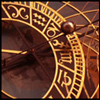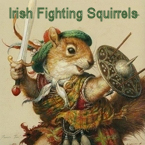Chickenboy
Posts: 24520
Joined: 6/29/2002
From: San Antonio, TX
Status: offline

|
So, I spent some time reading up on my use of the terms 'round', 'ball', 'sphere' and 'circular'. I admit error in conflating the use of 'round' and 'circular'. It turns out that Orm's definition is correct. Namely, that "A sphere is a perfectly round geometrical object in three dimensional space that is the surface of a completely round ball." Mea culpa.
But further delving into mathematical / physical parlance has made me realize that the use of the term 'ball' in 'soccer ball' is incorrect or at least informal.
In mathematics, a ball is the space bounded by a sphere. It may be a closed ball (including the boundary points that constitute the sphere) or an open ball (excluding them).
These concepts are defined not only in three-dimensional Euclidean space but also for lower and higher dimensions, and for metric spaces in general. A ball or hyperball in n dimensions is called an n-ball and is bounded by an (n − 1)-sphere. Thus, for example, a ball in the Euclidean plane is the same thing as a disk, the area bounded by a circle. In Euclidean 3-space, a ball is taken to be the volume bounded by a 2-dimensional sphere. In a one-dimensional space, a ball is a line segment.
In other contexts, such as in Euclidean geometry and informal use, sphere is sometimes used to mean ball.
Furthermore, a soccer ball is not a completely round spheroid. Apparently, the particularly round soccer balls are problematic in the play of the game. See the controversy associated with the 2010 Adidas Jabulani ball:
https://en.wikipedia.org/wiki/Adidas_Jabulani
So, ad hominem attacks aside, Orm was right. And wrong. His aforementioned definition of sphere (first paragraph above) was correct in the strictest application of the terms. But the vernacular use of 'ball' to refer to the object with which the game of soccer (or 'football' if you prefer) is less correct and bordering on the familiar. So if we're going to stick strictly to correct definitions, perhaps we could agree to call it a 'semi-rounded, hollow, superficially grooved spheroid'?
_____________________________
|
 Printable Version
Printable Version

























 New Messages
New Messages No New Messages
No New Messages Hot Topic w/ New Messages
Hot Topic w/ New Messages Hot Topic w/o New Messages
Hot Topic w/o New Messages Locked w/ New Messages
Locked w/ New Messages Locked w/o New Messages
Locked w/o New Messages Post New Thread
Post New Thread